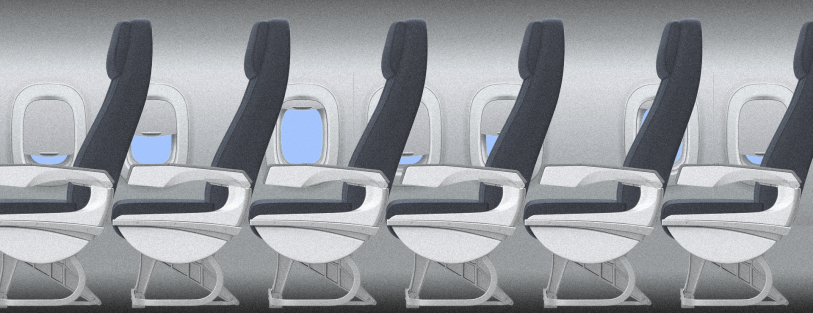It’s no secret that airlines have been shrinking seat sizes on airplanes for years, in an endless quest to cram more bodies onto each flight.
Between the early 2000s and 2017, seat pitch–or the space between a seat and the seat in front of it–decreased on an average of 4 inches across airlines. As a result, reclining your seat has become an affront on someone else’s personal space. On most coach flights I’ve flown, a recliner in front of me will actually hit my knees–and I’m six feet tall. I’m not an NBA player. It’s no wonder that reclining has become a hot topic, leading not only to the proliferation of new gadgets to solve the problem, but literal fist fights and criminal charges over personal space.
Now, one airline is acknowledging that reclining is just adding injury to insult. On Friday, Delta announced that on 62 of its planes–in particular, those that tend to fly shorter routes where you’re less likely to sleep–it will vastly limit seat recline. That figure constitutes a little less than 10% of Delta’s fleet (for now it’s a test to see how customers react), but it could help solve one of modern airplanes’ worst-designed “features.”
According to Skift, all economy-class seats (even those fancy, extra legroom ones) will go from a 4-inch recline to a 2-inch recline. All first-class seats will go from a 5-inch to a 3.5-inch recline. The move is being positioned as 100% about customer satisfaction, and not some sort of new way to squeeze more butts onto the plane. “This is not a push to add seats to the cabin or find a way to reduce the pitch of the seats,” Ekrem Dimbiloglu, director of onboard product and customer experience, said in an interview with Skift. “It’s about ensuring an optimal experience.”

A frequently cited study from the 1980s found that the angle of recline matters a whole lot to quality of sleep when you’re in a seat. Long story short: People can sleep pretty well in chairs–to a point. Chairs that lean 40 degrees or more (like your classic La-Z-Boys) offer what researchers dubbed “adequate rest.” Anything less was not–and the 17.5-degree incline of a typical chair stopped people from sleeping well or deeply.
Exact figures on airline seat angle of recline are tough to pin down, but it’s safe to say that outside of very high-end seats, no one is approaching 40-degrees. Even “reclining” coach seats lean a lot closer to the 17.5 figure than anything else. If we’re not getting good sleep from reclining anyway, why recline at all?
Then there’s the behavioral design conundrum of reclining. There is simply no consensus whether or not it is your right to recline your seat fully. What if the person in front of you does it first? Passengers did not design the seats, after all. So why is it up to all of us to negotiate the social dynamics of maximizing comfort without offending fellow passengers? In limiting our ability to recline, Delta is putting the onus on itself–as it should–to manage flyer comfort. Delta admits it may tweak the recline further with feedback, but time will tell whether a couple inches of tilt really make that much difference in passengers’ perceived comfort. And as far as I’m concerned, airlines still haven’t addressed the real problem: those shared armrests.
Recognize your brand’s excellence by applying to this year’s Brands That Matter Awards before the early-rate deadline, May 3.